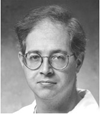1996 – Physicians in the US treat pain conservatively. Their practice pattern is shaped by many forces, including concerns about patient safety, chemical dependence, and diversion of prescribed opiates. Pain in many patients is undertreated.
1999 – The Veteran’s Health Administration announces an initiative that characterizes pain as the 5th vital sign. Highly touted, it accomplishes nothing, at least not in the first 5 years (1).
2000-2001 – The JCAHO, perhaps following the VA’s lead, announces its own initiative, also endorsing pain as the 5th vital sign. Pain is subsequently conquered, victory is declared, and everyone lives happily ever after. Okay, maybe not.
As you might expect, progress was far easier to advocate than effect. Once again, to practitioners, the supporting documentation reads more like a poorly written horror novel than useful guidance (2) 
(Click on Image to Enlarge) This is a graphic from an educational tool (2)…. I have so many problems with it that I don’t know
where to begin.
1. Everyone was taught about pain and how to manage it as a student and resident. Everyone. Some learned more than others, but the importance of managing pain was recognized well before the JCAHO and VA discovered it.
2. CME for pain was proportional to how much you encountered: surgeons and oncologists talked a lot more about it than dermatologists and radiologists.
3. Dependence, respiratory depression, and side effects are all real concerns…as is concern about regulatory scrutiny.
4. I will admit to limited availability of role models and access to pain docs in some settings. Both were legit then, and are now.
5. Patients are indeed the experts about their pain. But patients are humans, and that spans the spectrum of personalities and psychiatric disease. Crazy people get sick and have pain too. Managing pain in patients with psychiatric disease requires a deep understanding, that is to say understanding that is more than one powerpoint slide deep. If you understand the prevalence of psychiatric disease, and its higher prevalence among the chronically ill, you understand that this is not a minor consideration (but does manage to show up no where on their map of the world). There are other problems with this whole self-reporting thing, as we will explore briefly below.
There has been little effort to measure the success of the JACHO initiative, but there is evidence of its aftermath. Sales of opiate based analgesics have increased dramatically (approx 100%)(3). It is certain then, that physicians have become more liberal in their use of opiates to treat pain. Of course, the increased problems with chemical dependence, feared by reactionaries but not by the champions of these policies, have come about exactly as predicted (4), (5), (6)). Even the bizarre predictions became true: that there would evolve a group of ‘professional’ patients who would visit multiple pain clinics, self-reporting chronic pain, garnering multiple prescriptions, and reselling their drugs on the street. Opiates are dangerous to abuse, and those who care to can easily measure the body count associated with the new era of pain control (4). Once again, it’s not small…. and it’s far more the direct product of these campaigns than their architects are willing to admit *. To be fair, it is certain that human nature, human biology, and human avarice are the most important drivers of this problem; these initiatives simply made it worse. Dare I say that while no one ever died of pain, lots of people have died (in the past few years) from its treatment? Or at least in part as a consequence of these initiatives?
There is also evidence that suggests that the more liberal use of opiates to treat pain has increased mortality in patients in highly monitored settings, like hospitals (8). In a perfect world, this wouldn’t happen, but we don’t live there. We have no data on what the effect on outcomes, positive or negative, has been among outpatients. To restate the obvious: opiates produce a dose dependent depression of respiration. If we used no opiates, no one would die from opiates, but fear of pain would drive many patients to avoid life-saving and beneficial procedures. Treatment of pain with opiates is actually necessary to get patients to consent to procedures that will benefit them. There is an explicit trade-off here: the more liberal you are with opiates, the more complications you will have with their use. Once upon a time, practitioners titrated according to how they had been taught, the circumstances they worked in, and to individual patient response. Only charlatans guaranteed ‘no pain,’ competent practitioners promised only to treat pain as best they could. In particular, attempts to use opiates to reduce subjective pain scores to 5/10 or less are certain to produce complications. Why? Because there are patients out there (more than a few) who will not self-report pain of less than 5/10 while they can still talk. The liberal use of opiates in such patients is likely the source of excess mortality in reference 8. What’s wrong with these patients? While I am certain that some are simply abusing the opiates in some way, I am equally certain that others (most?) simply do not experience the pain relief we expect and believe that opiates provide.
What about the doctors? Well, some have made an industry (criminal enterprise) out of peddling bogus prescriptions, and have been prosecuted for doing so (7). There’s more of this than the prosecutors have been able to find. Let me be clear: these people deserve long jail sentences comparable to those handed out to other peddlers of lethal drugs (e.g. crack). These licensed pushers deserve a great deal of the blame for the current epidemic and its body count. Sadly, anesthesia based pain docs have often been the leaders of these criminal enterprises. Unreasonable fear of prosecution and regulatory scrutiny? These are no longer abstract concerns, but a real liability for pain docs and anyone else who is compelled to prescribe opiates to treat chronic pain (internists, family practice docs, surgeons,.. just a few). Everyone who manages chronic pain now finds themselves in a tense relationship with every pain patient they deal with. Is this one real? Or are they faking it? Once again, the news stories make it clear: the burden of making this assessment falls upon the practitioners, and they’re squirming in the middle of this double-bind. Get it right, and you’ve done your job. Get it wrong, and you’re either a sadist or a criminal.
How do you protect yourself? An opiate contract! These things, for which there is no evidence of any effect whatsoever, are proliferating at a terrific rate (9). To sum it up: you compel the patient to sign a contract which states: Honestly, I’m not lying, I’m in pain. It’s like asking a used car salesman if he’s telling you the truth; it’s not only pointless, it’s absurd. Opiate contracts are supposed to shift the burden for patient’s malfeasance onto them. I wouldn’t count on it. The entire notion is surreal if you think about it. I couldn’t make this up, and Orwell couldn’t have foreseen it.
It seems the most direct results of the JCAHO initiative are this epidemic and the modern opiate contract. If their outcomes mirror the VA outcomes (1), it is likely that there was minimal or no benefit to patients themselves. In addition to the uncertain body count already discussed, the other consequence of the present initiative is that life has become substantially harder for those patients who truly do have pain, as they now have to expend even more of their limited emotional energy convincing their docs that their pain is real. I would suggest that the JCAHO commission an outsider to conduct a Root Cause Analysis, but……
It’s worth observing explicitly that all of these problems are a consequence of our heavy reliance upon opiates, which remain the mainstay treatment for pain. What we need is better analgesics, analgesics with at least equal effect and less abuse potential. I don’t know if such a medication is possible, but I do believe that we should be out there trying to discover one.
What is my final beef here? The fifth vital sign was in widespread use for more than a decade before the VA or the JCAHO stumbled into the idea, and it was and is the oxygen saturation, not some pain assessment. Since they became clinically available, oxygen saturations have been obtained and recorded consistently and religiously by everyone who has had the ability to measure them. If no space was allocated, the measurement was wedged in somewhere. Practitioners everywhere did this in the absence of a mandate to do so: its importance was self-evident. In short, oxygen saturation was nearly universally accepted as the 5th vital sign at the time that these initiatives were being hatched. Every form that has been revised in the interval includes a space for the recording of the oxygen saturation, which is an objective, highly reproducible and important assessment of a patient’s physical well being – a vital sign. And everyone who practices medicine at the pointy end knows that oxygen saturation, not pain score, was and is the fifth vital sign. Always has been, and always will be. I’m not saying that pain isn’t important, but if they understood anything about clinical medicine, the people who launched these initiatives would have called it the sixth vital sign. How could they be so disengaged?
********************************************************************
*
note: once again, engaging in the wild and dangerous business of
extrapolation, you could posit as few as 2-5 extra deaths annually in
the Seattle region – population 3 million – and thus about 200-500
extra deaths nationally, or you could posit as many as 70 extra deaths
annually in Seattle, which would scale up to about 7000 extra deaths
nationally. The truth? Who knows?
1. http://www.pubmedcentral.nih.gov/articlerender.fcgi?artid=1924634
2. http://www.partnersagainstpain.com/content/PM_GUIDE/pmg.htm
3. http://www.statesman.com/news/content/news/stories/nation/08/21/0821pain.html
4. http://seattlepi.nwsource.com/health/328383_pain21.html
5. http://www.time.com/time/nation/article/0,8599,1654513,00.html
6. http://www.chicagotribune.com/news/nationworld/chi-pain_21aug21,1,4546324.story
7. http://www.foxnews.com/story/0,2933,293772,00.html
8. http://www.journalacs.org/article/PIIS1072751507001524/abstract
Mitch has also pointed out this website and article to me…
http://docsurg.blogspot.com/2007/07/downside-of-5th-vital-sign.html
9. http://cat.inist.fr/?aModele=afficheN&cpsidt=17700370
 Mitch Keamy is an anesthesiologist in Las Vegas Nevada
Mitch Keamy is an anesthesiologist in Las Vegas Nevada
 Andy Kofke is a Professor of Neuro-anesthesiology and Critical Care at the University of Pennslvania
Andy Kofke is a Professor of Neuro-anesthesiology and Critical Care at the University of Pennslvania
 Mike O'Connor is Professor of Anesthesiology and Critical Care at the University of Chicago
Mike O'Connor is Professor of Anesthesiology and Critical Care at the University of Chicago
 Rob Dean is a cardiac anesthesiologist in Grand Rapids Michigan, with extensive experience in O.R. administration.
Rob Dean is a cardiac anesthesiologist in Grand Rapids Michigan, with extensive experience in O.R. administration.
I suppose one could argue that a sign is an objective descriptor (ie - a vital sign, or an oxygen saturation), while a symptom is subjective (ie - pain). But where JCAHO is concerned, all the rules are broken.
Good article.
Posted by: Counting Sheep | August 30, 2024 at 05:32 PM
These are extracts of a communication from someone who prefers to remain off the radar:
*********************************************
JCAHO was just at XXXXXXXX and it was so annoying. I hate when I see pts in the hospital and have to ask them whether or not they are in pain, whether or not it makes sense. Pain is generally not one of those things that pts keep from you--pain is usually one of the 1st things they tell you. " The 5th vital sign" it is so ridiculous and so out of touch!
It is interesting to me, I thougt pain med seekers were a YYYYYYYYYYYYYYY thing. I did not realize that it was a common trend. These chronic pain pts on narcs are generally pretty nasty. They prey on young and inexperienced physicians. They try to get appts with interns in July of their 1st year. All of the chronic pain pts are supposed to have a pain consult, a psych consult, and a PCP. They are emotionally draining pts and doctor shop. It is often the pharmacists who call us to let us know that pts are getting narcs from more than one doc. As a PCP it is hard to know if you are the only one prescribing the meds.
I hate opiate contracts. I feel like I am signing up to give narcs period, whether or not they are appropriate. How is this good medicine? I feel like the contract puts me in a bind rather than makes pts less abusive. It feels demeaning, elementary schoolesque.
Posted by: Mike O'Connor | August 31, 2024 at 08:36 AM
There are some people who do take there meds as needed,I did when I was 18 I took everything as needed.Then I made the mistake of doing powder cocaine at 18, I was discharged, I like to have died I started having siezures,Iended up in ICU.I have been on pain meds since I was 8.I found anouther DR. who took care of what I needed 2 years later, I did powder again and I as last time was discharged.Now I am 38 noone will help me I am as bas as they come and none will help me
Posted by: UNKNOWN | June 05, 2024 at 09:22 PM
God forgives why cant pain clinics, its caused me to become, Bipolar, depression, Manic, and very suicdal,and I still want to die bacause of my pain.
Posted by: UNKNOWN | June 05, 2024 at 09:25 PM
UNKNOWN has two comments to my post, both of which are provocative and informative. Real or not, they're worthy of a response.
Pain has many causes. Pain can be a substantial component of both neurologic and psychiatric disease. Worse, in both instances, the absence of an apparent physical explanation has delayed the acceptance of this truth and systematic investigation of both cause and treatment.
Psychiatric disease is extraordinarily difficult to treat under the best of circumstances, and sadly it is the destiny of almost all psychiatric patients to be treated in the worst of circumstances, as their disease makes them uninsured/uninsurable in a world where insurers balk at paying for psychiatric care (which is staggeringly expensive). Hence most patients with significant psychiatric disease end up living on the fringes of our society, and at the bottom of the economic ladder, receiving whatever care is available to the indigent and uninsured.
Substance abuse is a significant component of some psychiatric disease (especially Bipolar disorder), and can cause or worsen others (e.g. the increasing association between cannabis abuse and psychosis). Worse, the liability associated with prescribing controlled substances to a non-compliant patient psychiatric patient with a history of substance abuse is insuperable. Even if there were no liability, compassionate practitioners might well judge that the risk to the patient from any such prescription might well surpass any benefit the patient might derive.
UNKNOWN: Good Luck.
Posted by: Mike O'Connor | June 18, 2024 at 07:00 AM
I'm an old woman; I had not been in a hospital since having babies when I was much younger (when they drugged us to the gills). I didn't watch medical tv shows nor had I ever seen a medical blog. Then I was hospitalized for a broke hip. I remember a nurse asking me occasionally to "rate your pain, one to ten". I had no idea what she was talking about, but she was so solicitous and kind that I wanted, in my wooze, to comply, so I'd give her a number, trying to vary it so as not to be boring or seem to be making it up. I never felt the slightest tinge of pain while in the hospital, just slept and rested, got up into the chair without assistance twice a day and never could stay awake long enough to eat more than two bites at mealtimes. After two days, I went home very hungry and with pain meds, but stopped them after a couple of days (constipating) because I could manage the pain with a couple of tylanol in the evenings and otherwise with ice packs and heating pad. I believe the hospital and the surgeon are the best in the country (I've since had experiences elsewhere to compare) and am so grateful to them for everything.
Posted by: peggy | July 09, 2024 at 10:57 AM
Great Poggy, I'm agreed with you.
Posted by: Health remedies | May 28, 2024 at 09:57 AM
I visited this blog first time and found it very interesting and informative.. Keep up the good work thanks..
Posted by: Van Sales | July 03, 2024 at 11:01 PM
What if you truly are a chronic pain patient? I go to 1 dr, and the only time add'l narcs are prescribed are in a hospital situation as I've had many surgeries in addition to major back injury. Not crazy about the contract, but it was a promise to shop only 1 pharmacy and not go to other docs which I don't do anyway. The only time it can be a problem is when my pharmacy is out of stock then I call for permission and they note my chart. Each month I feel a weight of judgment on my shoulders when I have done NOTHING wrong!! Have your chest cut open 3 times & get back to me. Is it possible for their to be true chronic pain sufferers & the "bad apples" have caused these problems?
Posted by: Anonymous | July 30, 2024 at 08:15 AM
Anonymous,
You are absolutely not the problem. There is no question that there are a large number of real chronic pain patients out there deserving of the highest level of care that we can provide. People like you.
It is the bad apples that have caused these problems. Thanks for pointing out to me something that escaped me in my original post: all of this does make legitimate patients feel guilty, even when they have done nothing wrong.
Posted by: Michael O'connor | August 02, 2024 at 10:42 AM
I'm a nursing student and am thrilled to see this information. I wish I could bring this to class, but would probably be thrown out on my keester for blaspheming the Holy JACO.
Thank you for this.
Posted by: Anonymous | June 12, 2024 at 08:53 AM